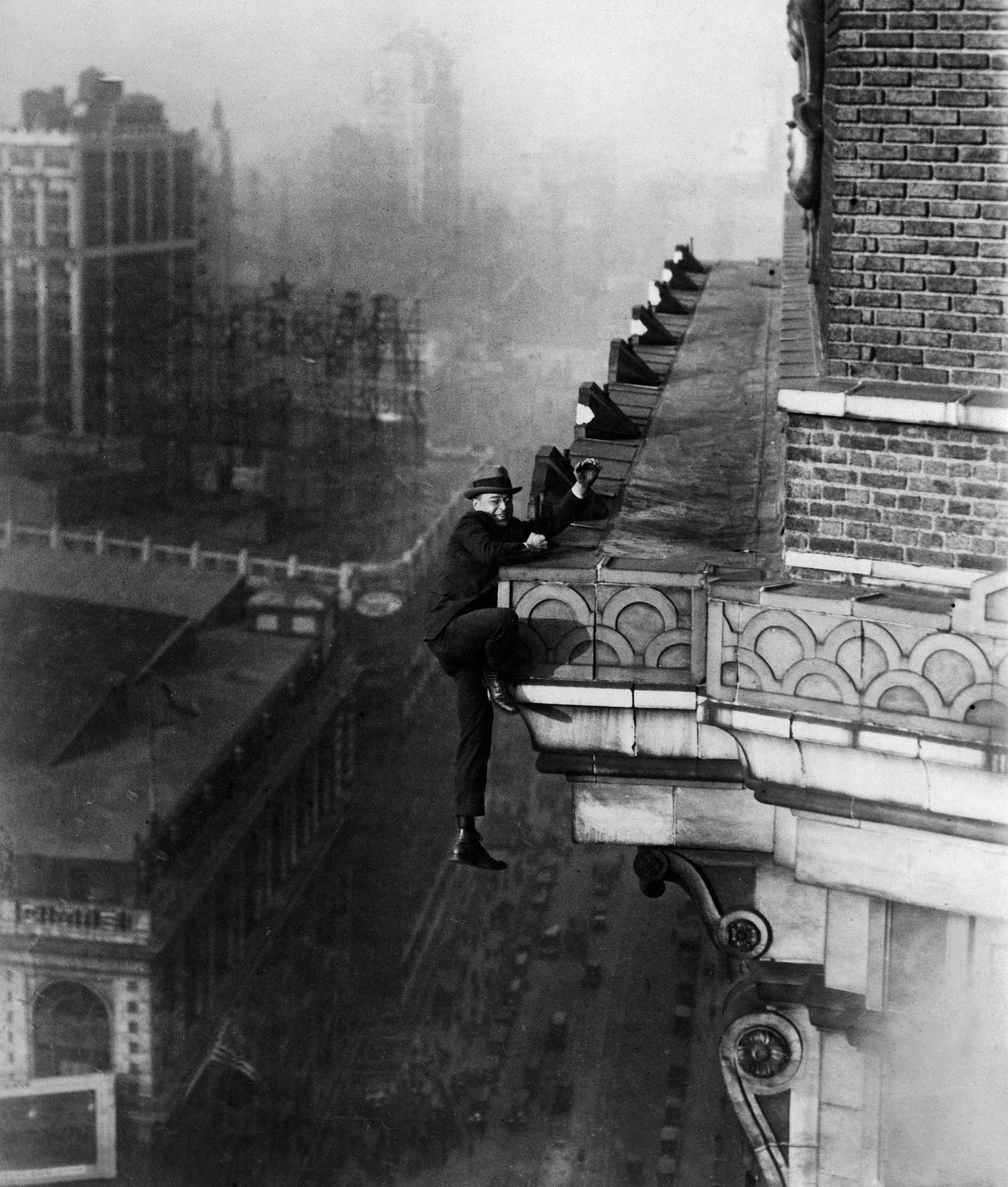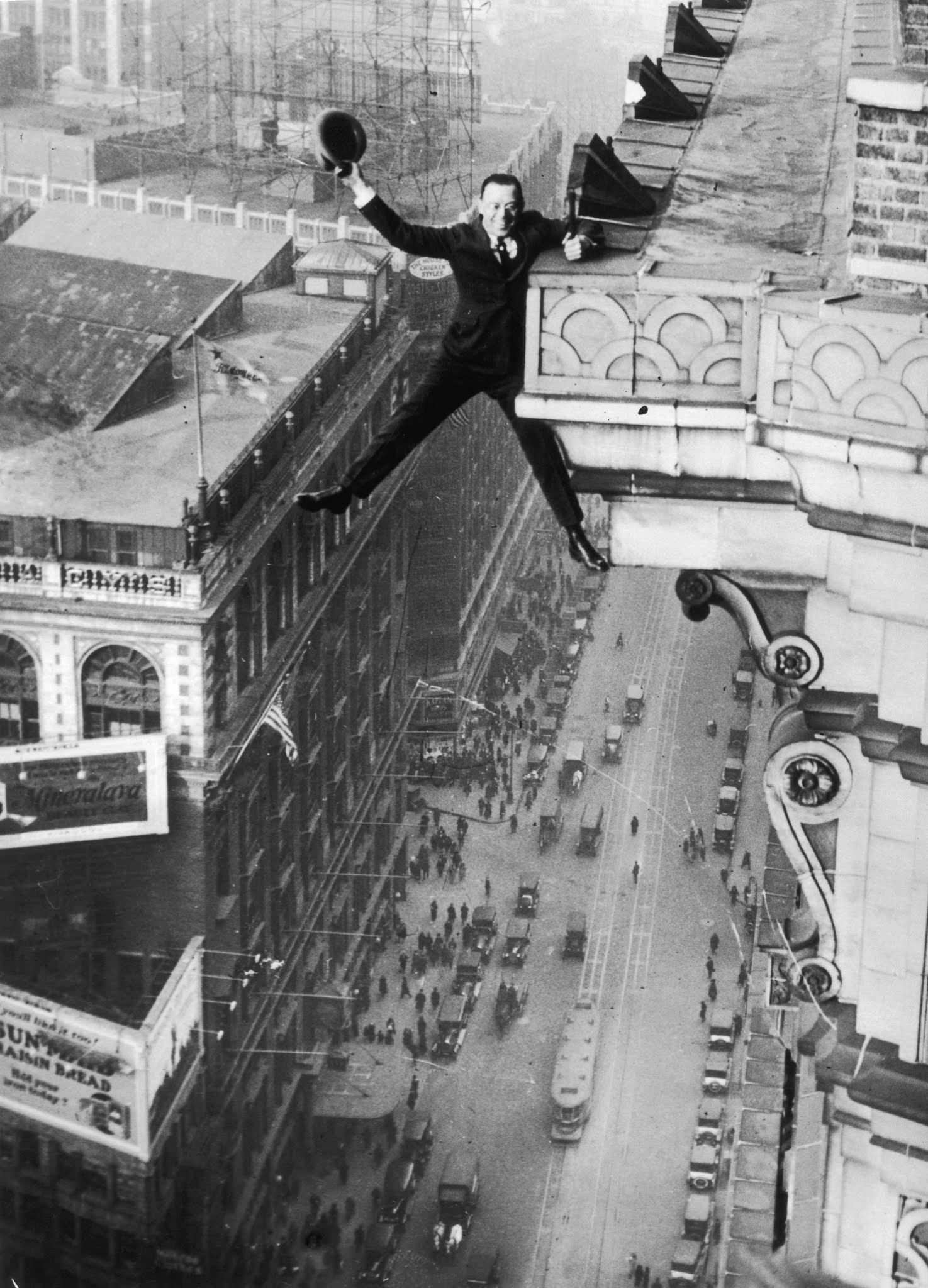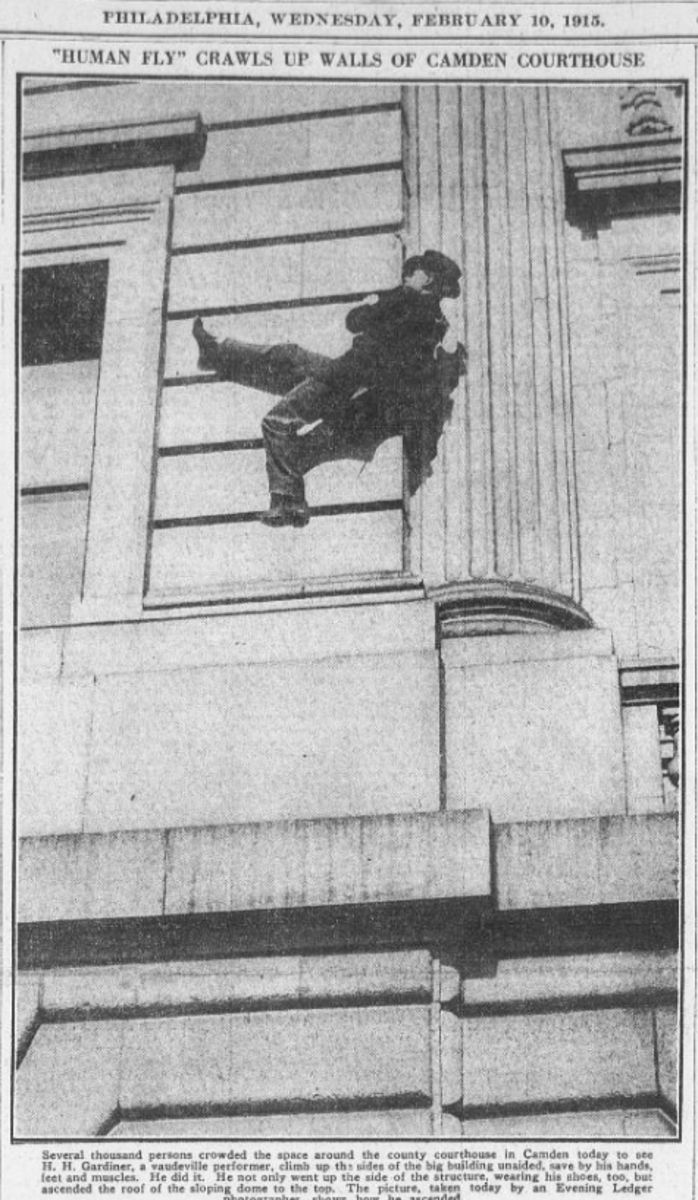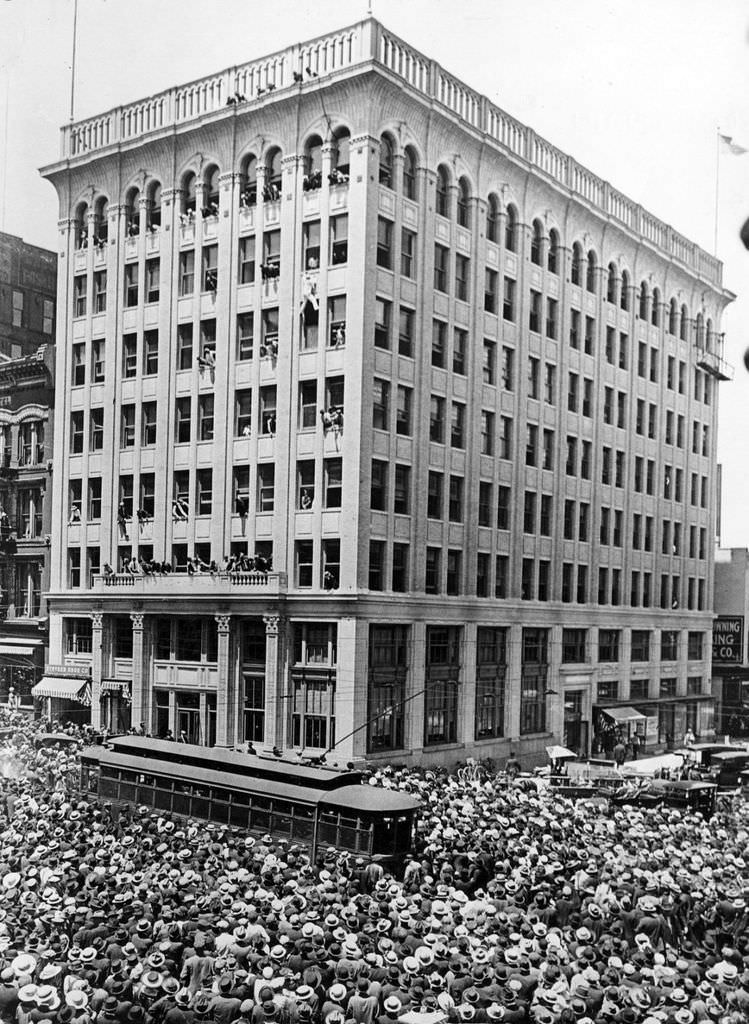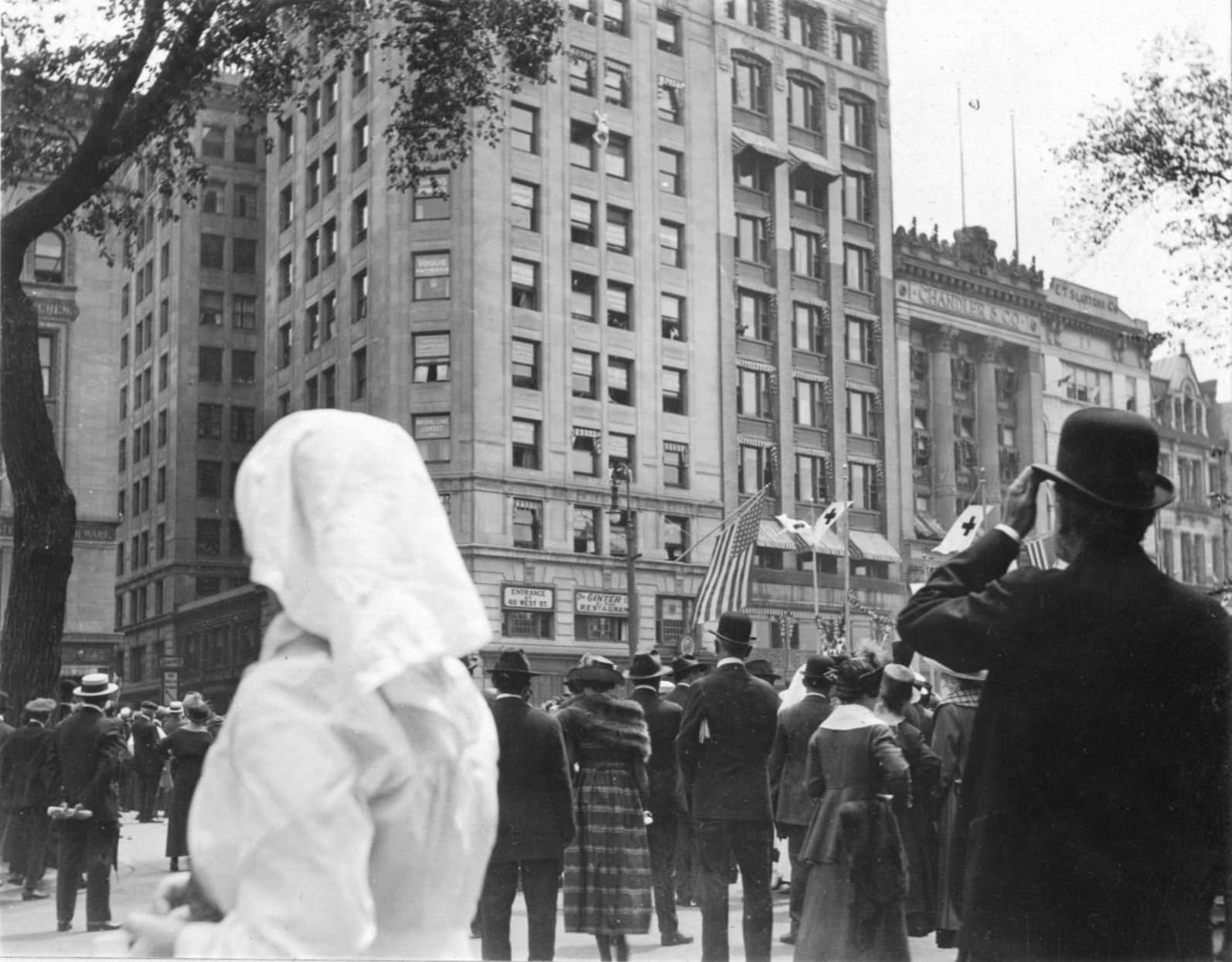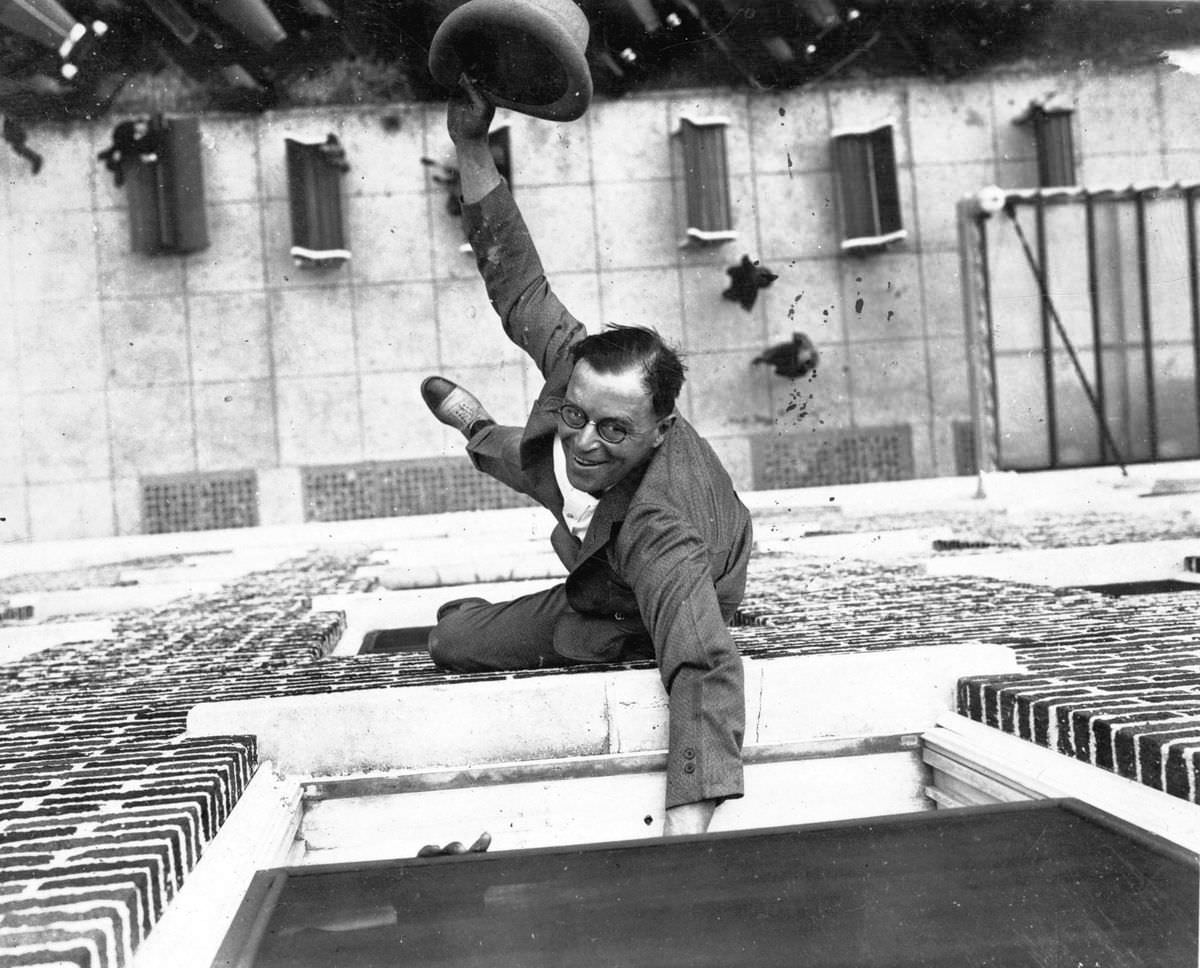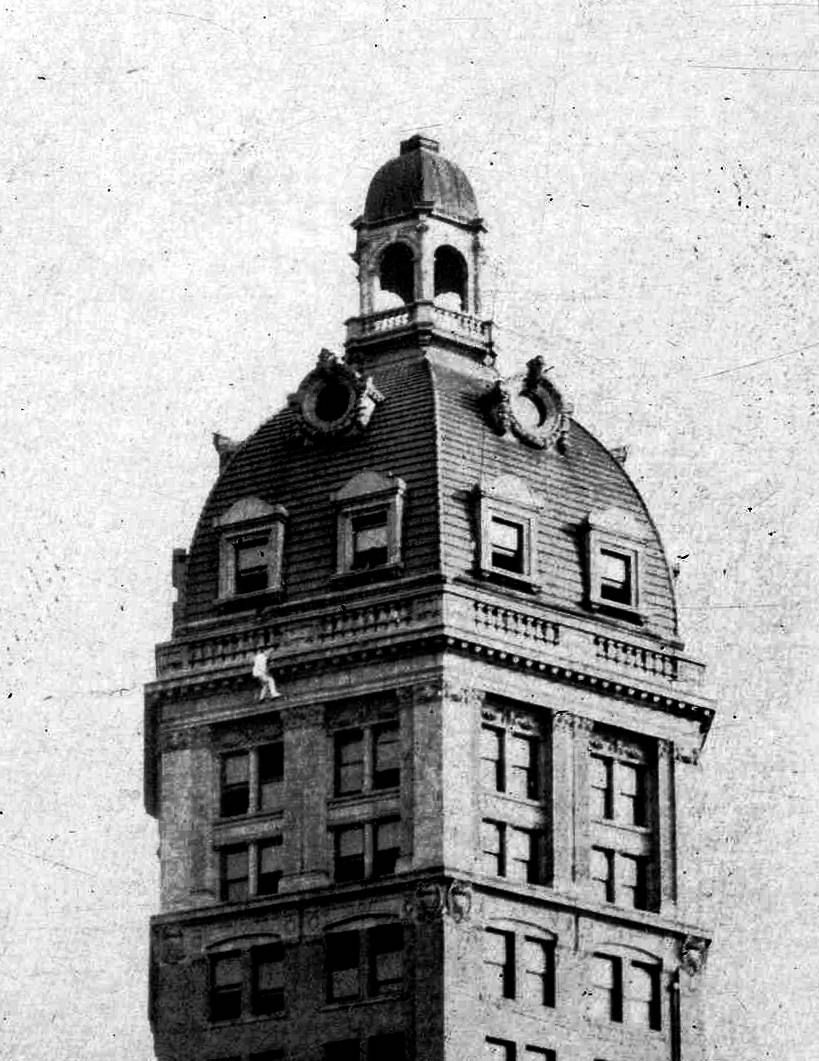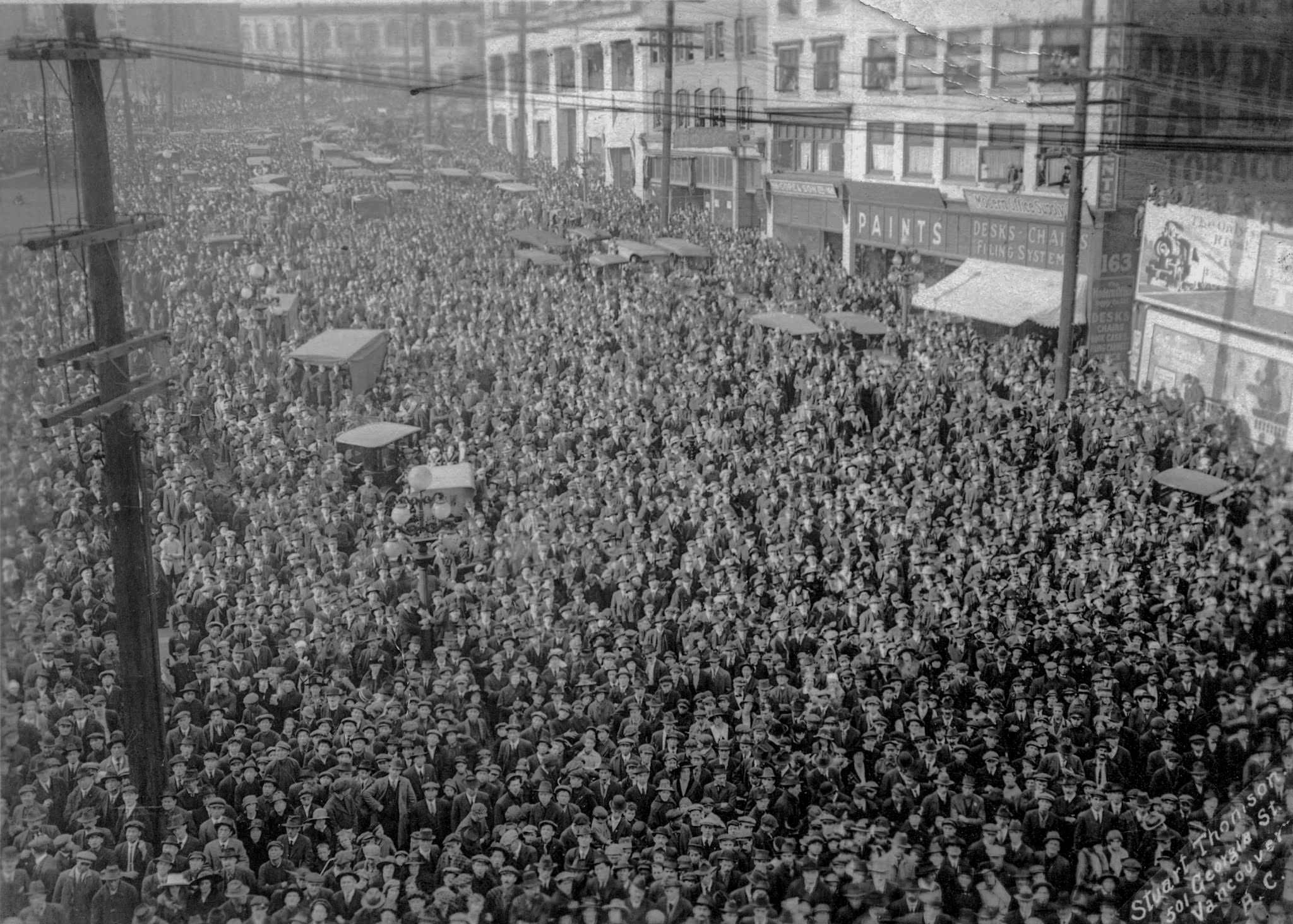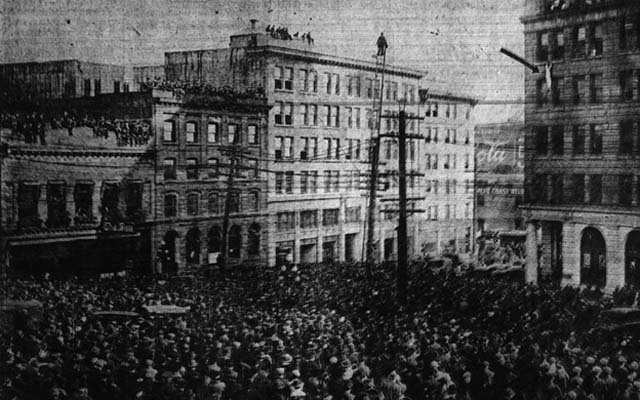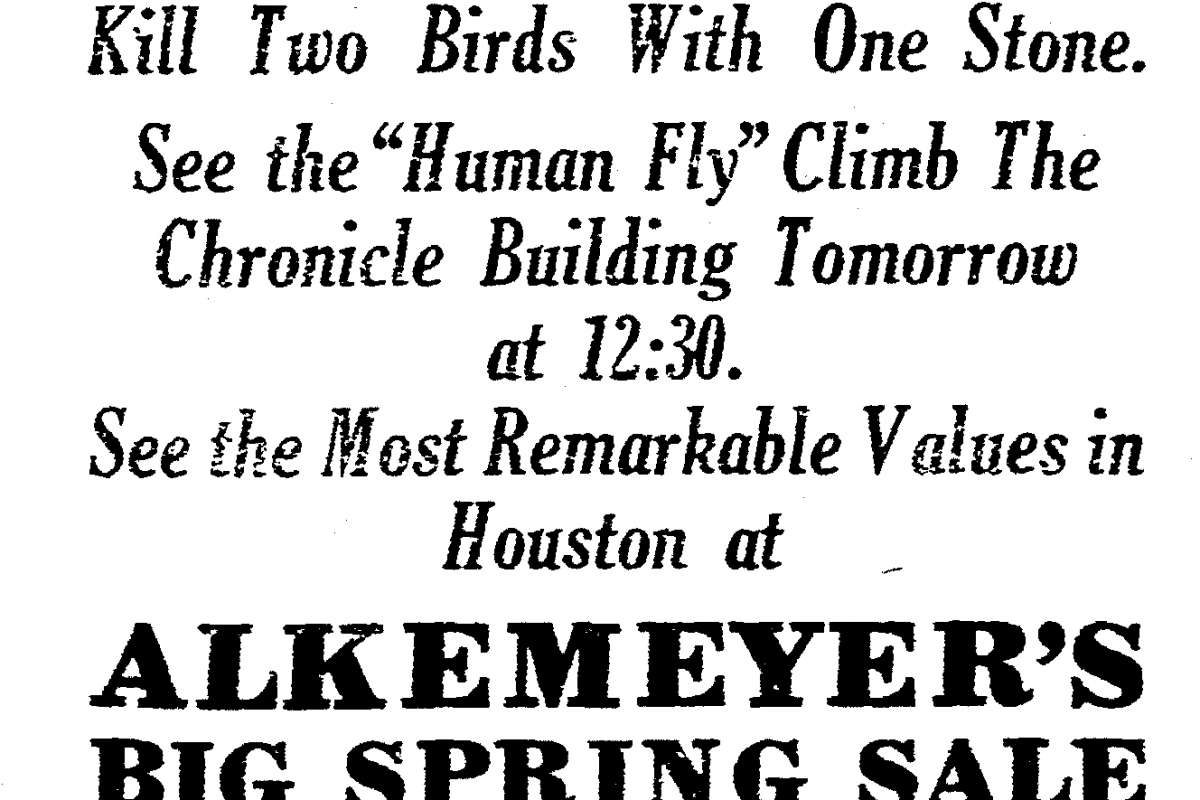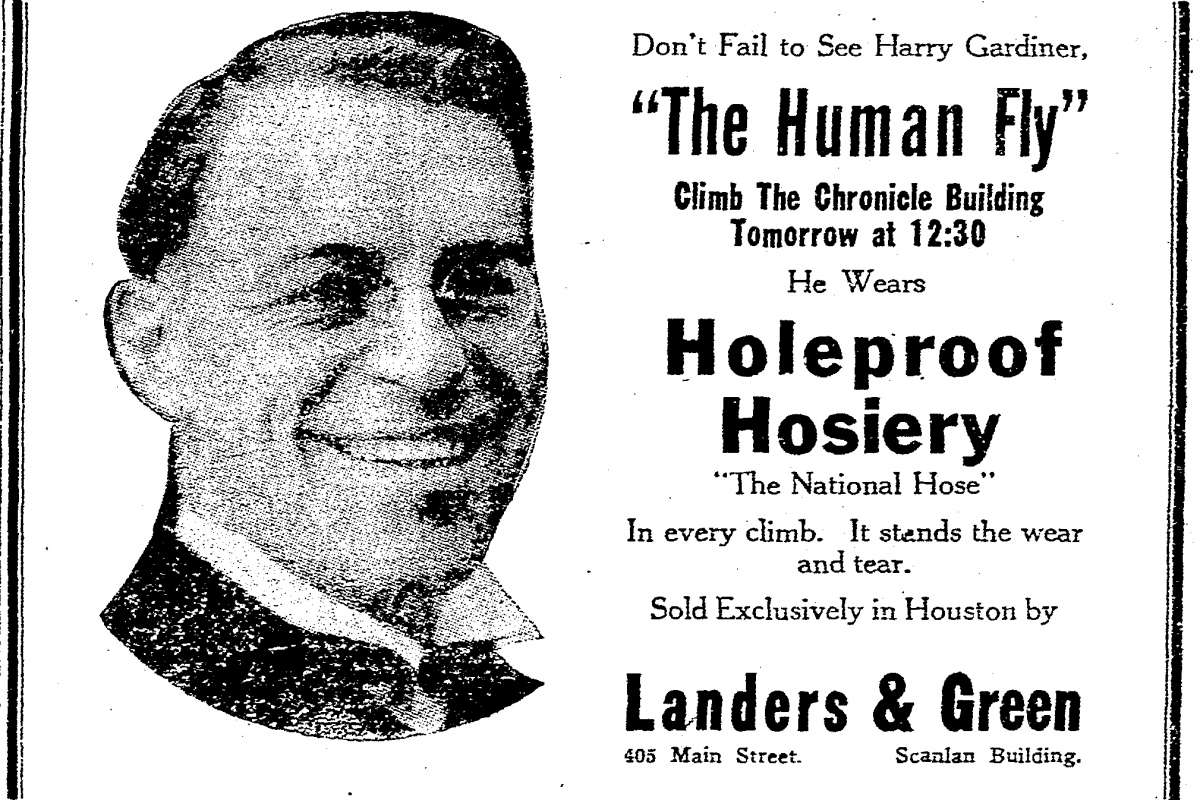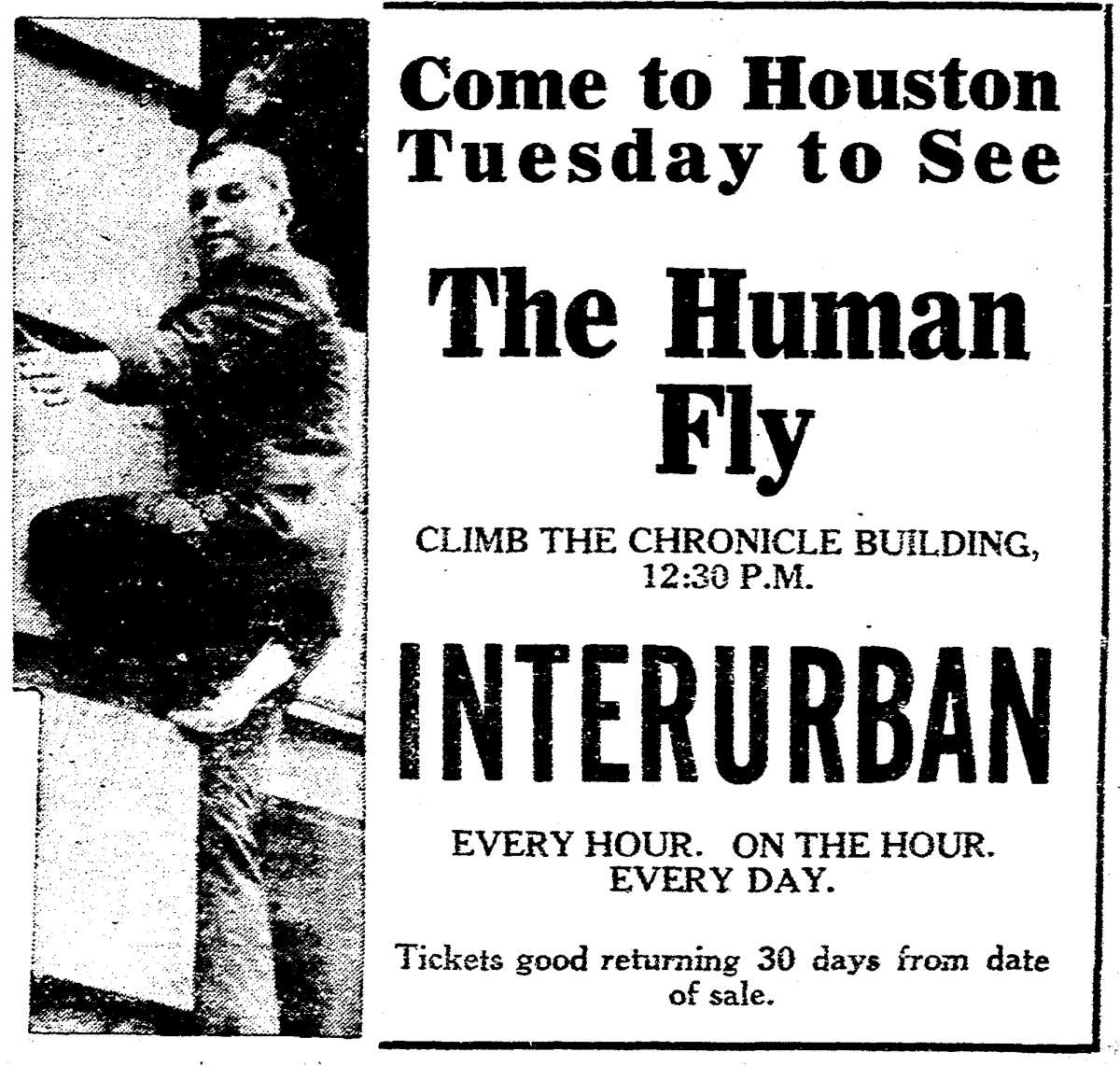In the early 20th Century, as skyscrapers rose over cityscapes in cities across the country, the strangest phenomenon began in the history of humankind. Human flies started popping up all over the country from 1905 to 1929 (usually to promote various businesses) to climb buildings with their bare hands. However, some climbers wore special suction gloves; most used only their strong fingers and feet to hold on to the building. Of course, fame has always been a powerful lure for the human flies. The lucrative aspect of this is that businesses could pay to advertise their wares to sometimes large crowds below. Banks, movies, and life insurance companies (always a favorite) were the advertisers.
Harry Gardiner was by far the most famous human fly. Gardner climbed his first building in 1905, and by the time he ended his career, he had climbed more than 700. He was famous by the middle of the second decade of the twentieth Century and ascended buildings to sell war bonds at the height of his fame. Gardiner was born in 1871 in New York. In 1905, when he was in his thirties, he began climbing. He became famous for climbing the 159-foot flagstaff atop Grant’s Tomb in New York. According to Gardiner, Grover Cleveland suggested the name “fly” to him when he was present in the audience. He was naturally gifted with solid hands, but he was also a committed and somewhat hammy performer. His bright smile and round glasses gave the Human Fly a show – for the camera, for the crowd, for the papers, for the businesses that paid him checks. He posed for stunning pictures, such as one in which he held onto the precipice of a building with one arm while holding out his hat with another. He often wore white clothing so that the masses below could still see him.
Gardiner often attracted large crowds to watch his ascents. In December of 1916, 30,000 people watched him climb to the top of the Omaha World-Herald building, another 30,000 in Terre Haute, and 22,000 in Denver. Gardiner’s career highlight came in Detroit in September of 1916 when he successfully ascension the 14-story Majestic Building, drawing over 150,000 spectators.
Gardiner continued to perform as a steeplejack until 1926 when he disappeared. In 1933, a man matching his description was found beaten and dead at the foot of the Eiffel Tower in Paris, France. However, it remains unclear if it was Gardiner or if it was just an unlucky tourist.


